Tokyo is Japan's capital and the country's largest city.
Tokyo is also one of Japan's 47 prefectures, but is called a metropolis (to) rather than a prefecture (ken). The metropolis of Tokyo consists of 23 city wards (ku), 26 cities, 5 towns and 8 villages, including the Izu and Ogasawara Islands, several small Pacific Islands in the south of Japan's main island Honshu.
The 23 city wards (ku) are the center of Tokyo and make up about one third of the metropolis' area, while housing roughly eight of Tokyo's approximately twelve million residents.
Prior to 1868, Tokyo was known as Edo. A small castle town in the 16th century, Edo became Japan's political center in 1603 when Tokugawa Ieyasu established his feudal government there. A few decades later, Edo had grown into one of the world's most populous cities.
With the Meiji Restoration of 1868, the emperor and capital were moved from Kyoto to Edo, which was renamed Tokyo ("Eastern Capital"). Large parts of Tokyo were destroyed in the Great Kanto Earthquake of 1923 and in the air raids of 1945.
Western Tokyo )Shinjuku, Shibuya)
ShibuyaShibuya is one of the twenty-three city wards of Tokyo, but often refers to just the popular shopping and entertainment area found around Shibuya Station. In this regard, Shibuya is one of Tokyo's most colorful and busy districts, packed with shopping, dining and nightclubs serving swarms of visitors that come to the district everyday.
Shibuya is a center for youth fashion and culture, and its streets are the birthplace to many of Japan's fashion and entertainment trends. Over a dozen major department store branches can be found around the area catering to all types of shoppers. Most of the area's large department and fashion stores belong to either Tokyu or Seibu, two competing corporations.
A prominent landmark of Shibuya is the large intersection in front of the station's Hachiko Exit. The intersection is heavily decorated by neon advertisements and giant video screens and gets flooded by pedestrians each time the crossing light turns green, making it a popular photo and movie filming spot.
Shibuya Station and surroundings will be undergoing major redevelopment over the coming years. On the east side of the station, a new large culture, shopping and office complex, the Shibuya Hikarie, will be opened in spring 2012, followed by the move of the Tokyu Toyoko Line platforms to the underground, which will enable through traffic with the Fukutoshin Subway Line from spring 2013.
This will be followed by a major redevelopment of the Shibuya Station building, including the move of the platforms of the JR Saikyo Line next to the platforms of the JR Yamanote Line. Furthermore, the pedestrian plaza on the west side of the station will be enlarged and made more pedestrian friendly in combination with a rearrangement of the bus and taxi stops.
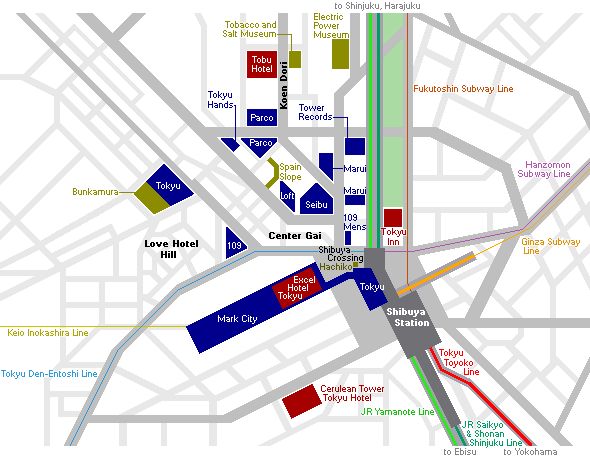
Famous Streets and Districts
|
Koen Dori |
| |
| Koen Dori, lit. "Park Street", is a popular shopping street leading from the Marui department store to Yoyogi Park. It was named after Parco department store (parco is Italian for park) and the fact that the street leads to Yoyogi Park. |
|
|
Spain Slope |
| |
| Spain Slope (Supeinzaka) is a narrow, approximately 100 meter long pedestrian street with stairs leading up the slope to the Parco department store. It is lined by boutiques, cafes and restaurants, and was nicknamed for its resemblance to a Spanish street scene. |
|
|
Love Hotel Hill |
| |
| This area of Shibuya has a high concentration of love hotels, which offer couples a private room for a 2 to 3 hour "rest" during the day (usually around 5,000 yen) or an overnight "stay" (usually around 10,000 yen). |
|
|
Tokyu |
| |
| There are two Tokyu department stores in Shibuya: the twelve floor Shibuya Station branch sits above Shibuya Station, while the ten floor main store is located a 5-10 minute walk northwest of the station. |
|
|
Shibuya 109 |
| |
| Shibuya 109 is a trend setting fashion complex for young women and an icon of the Shibuya district with more than one hundred boutiques on ten floors. Usually pronounced "Shibuya ichi maru kyu", the complex's name can also be read as "Shibuya to kyu", identifying the complex as part of the Tokyu Group. |
|
|
Tokyu Hands |
| |
| Promoted as a "Creative Life Store", Tokyu Hands has everything from do-it-yourself, interior, hobby, crafts, outdoors, travel goods, stationery and more. The Shibuya store spans eight floors. |
|
|
Seibu |
| |
| The Shibuya branch of the Seibu department store chain consists of nine floors, featuring mainly fashion goods and some fashion boutiques. Restaurants can be found on the top and bottom floors. |
|
|
Loft |
| |
| Loft is Seibu's answer to Tokyu Hands, and also offering a large array of products related to interior, hobby, crafts and gifts, but with less emphasis on do-it-yourself products. The Loft Shibuya branch consists of seven floors. |
|
|
Parco |
| |
| Parco is a shopping complex with an emphasis on fashion. The complex consists of numerous branch stores in the Shibuya area: Part 1, Part 3, Quattro, Zero Gate and Up's-4 found mainly around Koen Dori and the Spain Slope. |
|
|
Marui |
| |
| Marui Department Store is a leading fashion retailer with branch stores in almost all of Tokyo's major districts. Their Shibuya branch stores specialize in men's and women's fashion and are found north of the station around Koen Dori. |
|
|
Hachiko Statue |
| |
| A statue of a loyal dog named Hachiko. According to a famous story, the dog waited for his master every day in front of Shibuya Station, and continued to do so for years even after his master had passed away. It is one of Tokyo's most popular meeting points. |
|
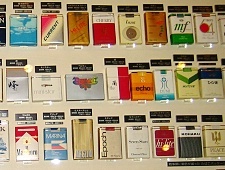
|
Tobacco and Salt Museum |
| |
| This museum introduces the history of tobacco and salt in Japan and throughout the world. It is operated by Japan Tobacco, formerly a state run company that monopolized the production and sale of tobacco and salt in Japan. Information in English is limited. |
|
|
Electric Power Museum (Denryokukan) |
| |
| This museum by the Tokyo Electric Power Company (TEPCO) introduces various aspects of electric energy, such as the process of power generation and the role of electricity in society and everyday life. Information in English is limited. |
|
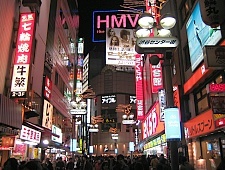
|
Center Gai |
| |
| The birthplace of many Japanese fashion trends, Center Gai is a busy pedestrian zone in the heart of Shibuya lined by stores, boutiques and game centers. In the evenings the street is crowded with young people heading to night clubs, restaurants and bars, or just loitering around |
|
-------------------------------------------------------------------
Shinjuku
Shinjuku is one of the 23 city wards of Tokyo, but the name commonly refers to just the large entertainment, business and shopping area around Shinjuku Station.
Shinjuku Station is the world's busiest railway station, handling more than two million passengers every day. It is served by about a dozen railway and subway lines, including the JR Yamanote Line. Shinjuku is also one of Tokyo's major stops for long-distance highway buses and city buses.
West of the station is Shinjuku's skyscraper district, home to many of Tokyo's tallest buildings, including several premier hotels and the twin towers of the Metropolitan Government Office, whose observation decks are open to the public for free.
Northeast of the station lies Kabukicho, Japan's largest and wildest red light district, while department stores, subterranean malls and electronic shops surround Shinjuku Station on all four sides, including the recently redeveloped Southern Terrace.
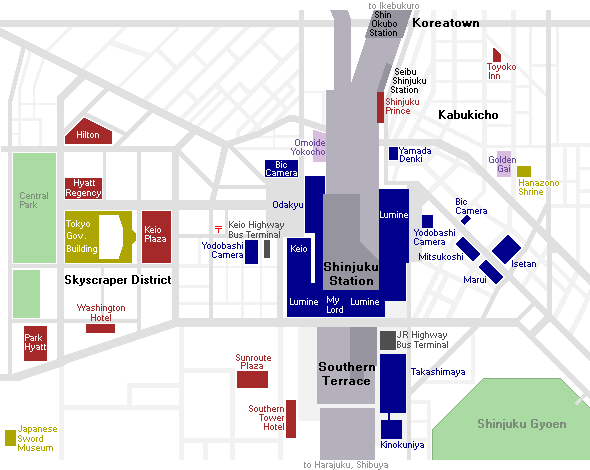
Districts:
|
| Kabukicho |
| |
Named after a kabuki theater, whose construction plans have never been realized, Japan's largest red light district features countless restaurants, bars, nightclubs, pachinko parlors, love hotels and a wide variety of red light establishments for both sexes and sexual orientations. Explore with caution and beware of exorbitant cover fees.
|
|
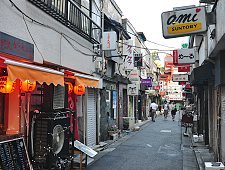 |
| Golden Gai |
| |
| Golden Gai is a small, atmospheric nightlife district in Kabukicho packed with over 200 small bars and eateries. Most places are very small, seating only a few customers, and typically cater to a few regular customers. A few of the bars openly welcome foreign guests with signs and menus set outside listing prices in English. |
|
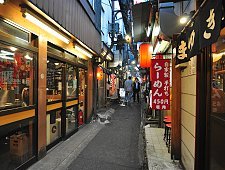 |
| Omoide Yokocho |
|
| moide Yokocho (lit. memory lane), also known under its more colorful nickname Piss Alley, is a small network of alleyways along the tracks northwest of Shinjuku Station. The narrow lanes are filled with dozens of tiny eateries serving ramen, soba, sushi, yakitori and kushiyaki. Many restaurants consists of just one counter with some chairs, while others have a couple of tables. |
|
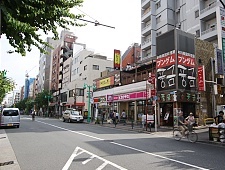 |
| Shin-Okubo Koreatown |
|
| Shin-Okubo Koreatown is a collection of Korean shops and restaurants found along the main road and side streets around Shin-Okubo Station, one stop north of Shinjuku Station. Many of the shops and restaurants are operated by Korean immigrants and sell a variety of Korean goods, including K-Pop music, videos and groceries. |
|
|
| Shinjuku Skyscraper District |
|
| The area west of Shinjuku Station is home to a large number of skyscrapers including the Tokyo Metropolitan Government Building and leading hotels such as the Keio Plaza, Hilton, Hyatt Regency and Park Hyatt (featured in Lost in Translation). Several of the skyscrapers have shops and restaurants on their ground floors and additional restaurants with great views of the city on their top floors. |
Attractions and Parks
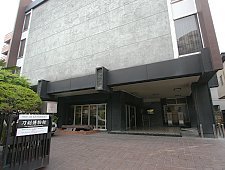
|
| Japanese Sword Museum |
| |
| The Japanese Sword Museum is a sword enthusiast's dream. Along with the countless blades on display, there are also exhibits on sword making and care as well as excellent English pamphlets. | |
|
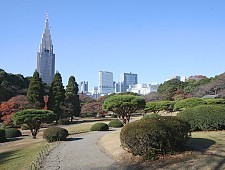
|
| Shinjuku Gyoen | | | ) |
| |
| Shinjuku Gyoen is one of Tokyo's largest and most pleasant parks and one of the city's best cherry blossom viewing spots. It was opened to the public in 1949, after it had served as a garden for the Imperial Family since 1903. |
|
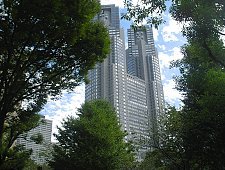
|
| Central Park |
| |
| This public park directly behind the Tokyo Metropolitan Government twin towers houses Kumano Shrine (Kumano Jinja) as well as a sizable homeless population living in blue tarp shanties and cardboard box homes. |
|
Department Stores:
|
| Isetan |
| |
| With a history of over 100 years Isetan is a veteran among Shinjuku's department stores. The Shinjuku store is Isetan's flagship and consists of ten floors, including restaurants on the top floors and a food department in the basement. |
|
|
| Takashimaya |
| |
| Opened in 1996, the Shinjuku branch of Takashimaya consists of 15 floors, including a food department in the basement and three restaurant floors. It is the main store of the "Takashimaya Times Square" complex that also houses a Tokyu Hands branch and Kinokuniya book store with a large foreign language section. |
|
|
| Odakyu |
|
| Odakyu Department Store consists of 16 floors, including a wonderful food department in the basement and restaurants on its top floors. The department store belongs to the Odakyu Group, which also operates a suburban railway line from Shinjuku to Odawara (Odakyu is an abbreviation for "Odawara Express"). |
|
|
| Lumine |
| |
| Lumine is owned by JR East and located both next to and above Shinjuku Station's South and East Exits. Lumine is divided into "Lumine 1" and "Lumine 2" on either side of the South Exit and "Lumine Est" (formerly known as "My City") above the East Exit. |
|
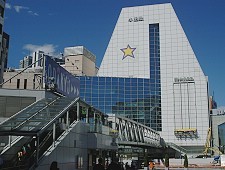
|
| Mylord |
|
| Mylord offers seven floors of shopping and three restaurant floors. The complex also includes "Mosaic Dori", a narrow pedestrian street between the Keio and Odakyu department stores. Mylord is affiliated with the Odakyu Group. |
|
Electronics Stores:
|
| Yodobashi Camera |
|
| Yodobashi Camera is one of Japan's leading discount electronics retailers, and especially strong on camera equipment. Yodobashi's main store is divided up between half a dozen buildings near the west exit of Shinjuku Station, while a smaller branch is located near the station's east exit. |
|
|
| Bic Camera |
|
| Bic Camera is another of Japan's leading discount electronics retailers. Bic's main store is located in Ikebukuro, but it also operates two branches next to Shinjuku Station, one in the Odakyu Halc Building near the station's west exit and one east of the station near the Isetan department store. |
|
===============================================================================
Central Tokyo (Chiyoda, Chuo)
Akihabara
Akihabara, also called Akiba after a former local shrine, is a district in central Tokyo, that is famous for its many electronics shops. In more recent years, Akihabara has gained recognition as the center of Japan's otaku (diehard fan) culture, and many shops and establishments devoted to anime and manga are now dispersed among the electronic stores in the district.
Akihabara has also been undergoing some major redevelopment recently with the addition of the Akihabara Crossfield complex aimed at promoting Akihabara as a center for global electronics technology and trade, and a major renovation of Akihabara Station and surroundings.
Electronics
Hundreds of electronics shops, ranging from tiny one man stalls specializing in a particular electronic component to large electronics retailers, line the main Chuo Dori street and the crowded side streets around Akihabara. They offer everything from the newest computers, cameras, televisions, mobile phones, electronics parts and home appliances to second-hand goods and electronic junk.
A few chain stores, such as Sofmap, Ishimaru and Laox, each operate multiple specialized branches along the main roads, while small independent shops can be found in the side streets. The only mega sized store is the Yodobashi Camera complex on the east side of the station.
Note that some of the electronics on sale are only intended for use in Japan due to voltage and other technical differences, Japanese language documentation and limited warranties. However, several stores also feature a selection of international models intended for overseas use, and most also offer duty free shopping to foreign tourists on purchases of over 10,000 yen (passport required).
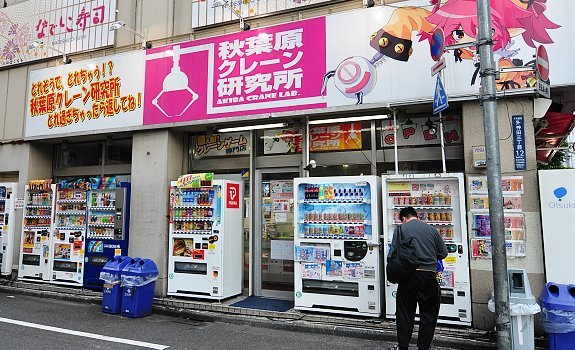
Otaku Goods
The character of Akihabara has constantly changed over the decades and continues to do so. In the last decade Akihabara has emerged as a center of Japanese otaku and anime culture, and dozens of stores specializing in anime, manga, retro video games, figurines, card games and other collectibles have filled the spaces between the electronics retailers.
In addition to shops, various other animation related establishments have become popular in the area, particularly maid cafes where waitresses dress up and act like maids or anime characters, and manga kissaten ("comics cafes"), a type of internet cafe where customers can read comics and watch DVDs in addition to having access to the internet.
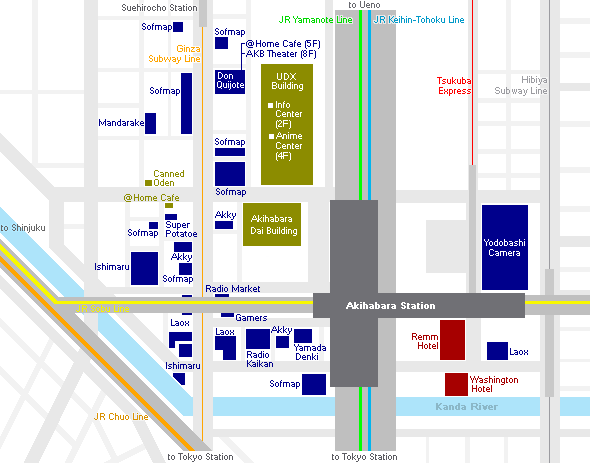
|
| Sofmap |
| |
| Sofmap operates 12 shops around Akihabara. In addition to their main store, they have many specialty branches that feature a type of item such as Apple products, CDs or games, as well as a number of outlets for used products such as used computers, cameras, CDs and software. |
|
|
| Yamada Denki |
| |
| Yamada Denki operates a "LABI" store just across the street from the Akihabara Electric Town exit of JR Akihabara Station. It specializes in personal computers, pc accessories and household electronics. |
|
|
| Akky |
| |
| Akky specializes in duty free goods and operates three shops around Akihabara Station. Akky sells a variety of electronic equipment for overseas use, including cameras, computers, televisions, DVD players and software. Some branches carry used or refurbished items. |
|
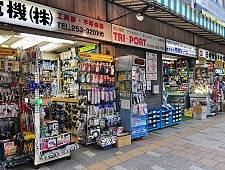
|
| Radio Market |
| |
| Radio Market is a former black market zone that specialized in selling radio and electronic parts after World War II. Today it is a collection of narrow alleys lined by small stalls where hundreds of electronic components, security monitors, radios and computer parts are laid out for customers to browse through. Components are typically sold from wholesale lots at cheap prices and without packaging. |
|
|
| Yodobashi Camera |
| |
| The Shinjuku based discount electronic store giant Yodobashi Camera opened its huge Akihabara branch in September 2005. Unlike most other electronic shops, it is located on the east side of Akihabara Station. This branch offers one stop shopping for computers, games, watches and cameras, and sells duty free and international models. |
|
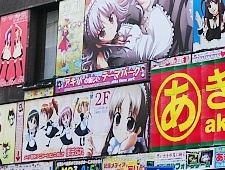
|
| Maid Cafes |
| |
| Maid cafes are cosplay themed restaurants where guests are served by waitresses that are typically dressed as French maids. In addition to serving food, the maids engage in conversation and games with the customers and treat them with the care and respectful language due to the master of a house. Maid cafes are popular with both men and women, and some cafes, like the @Home Cafe, offer English speaking maids. |
|
|
| Don Quijote |
| |
| Don Quijote is a discount store chain that carries everything from groceries and toys to electronics and high end fashion goods. The Akihabara branch is home to the girl pop group AKB48, who perform daily shows at their theater on the 8th floor of the store (3000 yen). There is also a branch of the @Home Cafe maid cafe on the 5th floor of the store. |
|
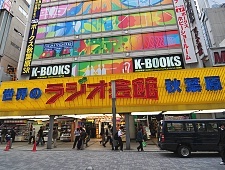
|
| Radio Kaikan |
| |
| Radio Kaikan is a collection of shops selling electronics and anime related goods. Some of the famous shops include Kotobukiya, K-Books and Kaiyodo which sell all kinds of manga, figurines, toys, models and other collectibles. |
|
|
| Gamers |
| |
| Gamers sells a wide range of anime and manga related goods including movies, video games, CDs, stationary, software and character goods. |
|
|
| Mandarake |
| |
| Mandarake, the self described largest "manga and anime shop in the world", operates a large branch in Akihabara. Specializing in pre-owned goods, it is a good place to find rare and collectible manga, figurines, dolls, posters, CDs, toys and other types of manga and anime related goods. |
|
-----------------------------------------------------------------------------------------
Ginza
The Ginza is Tokyo's most famous upmarket shopping, dining and entertainment district, featuring numerous department stores, boutiques, art galleries, restaurants, night clubs and cafes.
One square meter of land in the district's center is worth over ten million yen, making it one of the most expensive real estate in Japan. It is where you can find the infamous $10 cups of coffee and where virtually every leading brand name in fashion and cosmetics has a presence.
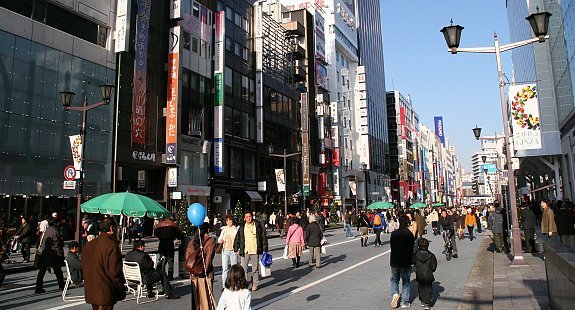
From 1612 to 1800, today's Ginza district was the site of a silver coin mint (Ginza means "silver mint" in Japanese), after which the district was eventually named. The Ginza evolved as an upmarket shopping district following the 1923 Great Kanto Earthquake.
Most shops in the Ginza district are open everyday of the week. A visit is most pleasant on a weekend afternoon, when the central Chuo Dori street gets closed to traffic and become a large pedestrian zone. The closure takes place from 14:00 to 17:00 on Saturdays and from 12:00 to 17:00 on Sundays (until 18:00 from April through September).
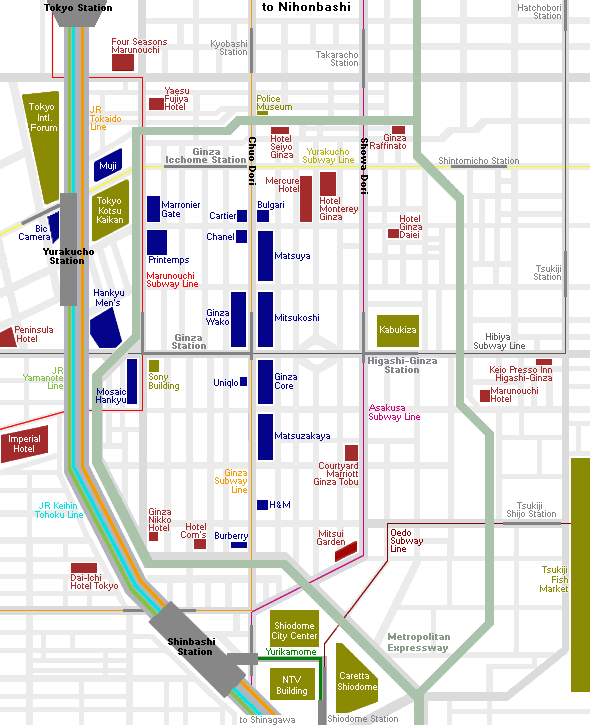
Points of Interest
|
| Ginza Wako |
|
| Built in 1932, the clock tower of the Ginza Wako building is the symbol of the Ginza, standing at the northwest corner of the district's centrally located Ginza 4-Chome junction of Chuo and Harumi Dori. Inside the building, jewelry and luxury items are sold. |
|
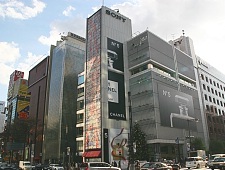
|
| Sony Building |
| |
| The newest products by Sony, including DVD recorders, televisions, cameras, audio sets, mobile phones, computers and Play Station products, are displayed to the public in the showrooms in this building. There are also a few shops, restaurants and cafes. |
|
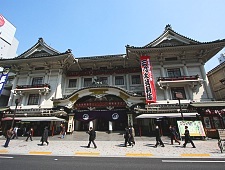
|
| Kabukiza Theater |
| |
| Kabuki pieces were performed in this theater until April 2010. The theater is now being torn down and rebuilt at the base of a new skyscraper. The facade and interior of the new theater will resemble the previous structure. The new theater is scheduled to open in spring 2013. |
|
|
| Police Museum |
| |
| Located just outside of the Ginza area to the north, the four floor Police Museum is operated by the Tokyo Metropolitan Police Department and is free of charge. Although there are no English explanations, displays such as historical uniforms and equipment can be easily understood. |
|
Department Stores
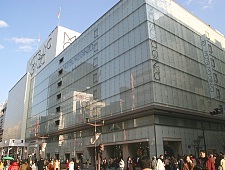
| | | | | | | | Matsuya |
| |
| The Ginza store of the Matsuya department store chain offers fashion, foods, household goods, a pet shop, a travel agency and an exhibition hall on its eleven floors | . | |
|
|
| Matsuzakaya |
|
| The Ginza store of the Nagoya based Matsuzakaya department store chain offers goods and services on ten floors. Matsuzakaya has a history that reaches back to the year 1611. |
|
| Printemps |
|
| The Ginza store of the Paris based Printemps department store chain offers fashion, accessories, wines, foods and restaurants on ten floors. Printemps Ginza was opened in the year 1984 | . | | |
|
|
| Hankyu |
|
| Osaka based Hankyu operates the "Yurakucho Hankyu", a conventional department store in the Yurakucho Marion Building and "Mosaic Ginza Hankyu", a collection of fashion and lifestyle stores. | |
|
-------------------------------------------------------------------------------------------------------------
Northern Tokyo
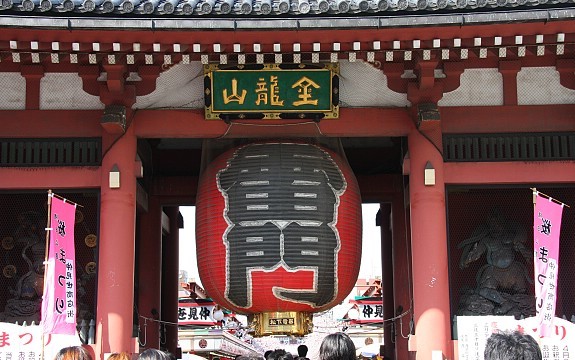
Asakusa is the center of Tokyo's shitamachi, lit. "low city", one of Tokyo's few districts, which have preserved a certain atmosphere of the old Tokyo.
Asakusa's main attraction is Sensoji, a very popular Buddhist temple, built in the 7th century. The temple is approached via the Nakamise, a shopping street that has been providing temple visitors with a variety of traditional, local snacks and tourist souvenirs for centuries.
Asakusa can be easily explored on foot. Alternatively, you can consider a guided tour on a rickshaw (jinrikisha, lit. "man powered vehicle"). A 30 minute tour for two persons costs around 8000 Yen. Shorter and longer courses are also available.
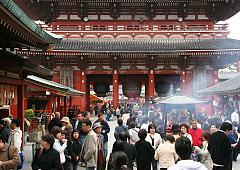
Sensoji temple grounds |
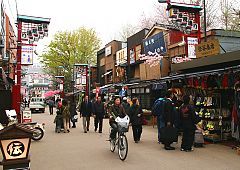
Dempoin Dori (Dempoin Street) |
For many centuries, Asakusa used to be Tokyo's leading entertainment district. During the Edo Period, when the district was still located outside the city limits, Asakusa was the site of kabuki theaters and a large red light district. In the late 1800s and early 1900s, modern types of entertainment, including movies, set foot in Asakusa.
Large parts of Asakusa were destroyed in the air raids of World War Two. While the area around the rebuilt Sensoji has regained its former popularity after the war, the same cannot be said for Asakusa's entertainment district.
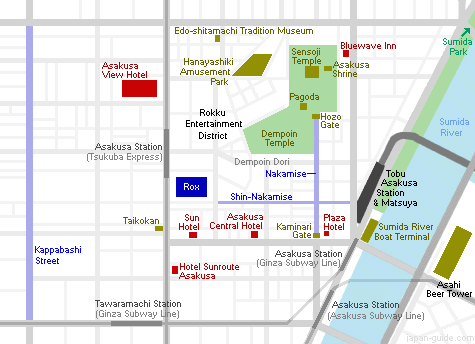
Temples and Shrines:
 |
| Kaminarimon (Kaminari Gate) |
| Always open. Admission free. |
| Kaminarimon is the first of two large entrance gates leading to Sensoji Temple. First built more than 1000 years ago, it is the symbol of Asakusa. The Nakamise shopping street leads from Kaminarimon to the temple grounds. |
|
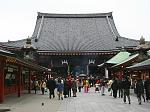 |
| Sensoji Temple (more details) |
| Main building open 6:00 to 17:00 (Oct to Mar from 6:30). Admission free. |
| Sensoji ("Senso" is an alternative reading for Asakusa and "ji" means temple) is Tokyo's most famous and popular temple. Built in the 7th century, it is also one of its oldest, although the current buildings are postwar reconstructions. |
|
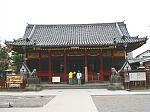 |
| Asakusa Shrine |
| Always open. Admission free. |
| Asakusa Shrine, also known as Sanja-sama, was built during the Edo Period and survived the air raids of 1945. The shrine's festival, the Sanja Matsuri, is one of Tokyo's most spectacular and popular. It is held every year on a weekend (Friday to Sunday) in mid May. |
|
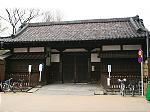 |
| Dempoin Temple |
| Not open to the public! |
| Dempoin is a temple just next to Sensoji, known for its beautiful garden. Unfortunately, the temple and garden are not open to the public. Visiting the garden by appointment, as it used to be possible, cannot be done anymore, either. |
|
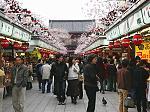 |
| Nakamise Shopping Street (more details) |
| Opening hours depend on the individual shops. Typically daily from 9:00 to 19:00. |
| The Nakamise shopping street stretches over approximately 250 meters from Kaminarimon to the main grounds of Sensoji Temple. It is lined by more than 50 shops, which offer local specialties and the usual array of tourist souvenirs. |
|
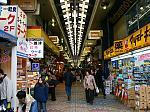 |
| Shin-Nakamise Shopping Street |
| |
| Shin-Nakamise or New Nakamise Shopping Street runs perpendicular to the Nakamise Shopping Street. It is a covered shopping arcade lined by various shops and restaurants. |
|
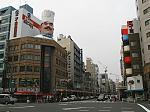 |
| Kappabashi Shopping Street (more details) |
| |
| Kappabashi is an almost one kilometer long street lined by shops catering to restaurant businesses. Items on sale include tableware, kitchen utensils and appliances, sample food made of wax and plastic, furniture, signs, lanterns and uniforms. |
|
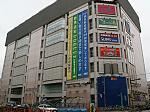 |
| Rox Department Store |
|
| Rox is a shopping and entertainment complex consisting of a main building (Rox) and three annex buildings (Rox2G, Rox3 and Rox Dome). Many shops sell fashion for ladies and kids. There is a 24h supermarket in the basement of the main building. |
|
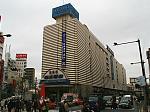 |
| Tobu Asakusa Station & Matsuya Department Store |
| Matsuya department store is open daily from 10:00 to 19:30. |
| Tobu Asakusa Station is the terminal station of Tobu trains heading into the suburbs and prefectures north of Tokyo, including trains to Nikko. The station building also houses a Matsuya department store that spans eight floors. |
|
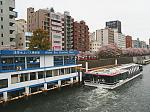 |
| Sumida River Cruise (more details) |
| Tokyo Water Bus operates sightseeing ships every 30 to 60 minutes from Asakusa Pier via Hama Rikyu Garden to Hinode Pier, where you can transfer to a ship to Odaiba. In addition, there are less frequent, direct ships from Asakusa to Odaiba. |
|
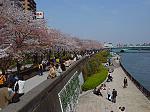 |
| Sumida Park |
| Always open. Admission free. |
| This riverside park stretches along both sides of Sumida River for several hundred meters. In spring it becomes a popular cherry blossom viewing spot, while on the last Saturday of July it becomes the site of the Sumida River Firework Festival. |
|
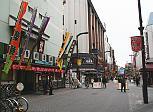 |
| Rokku Entertainment District |
| Opening hours depend on the individual businesses. |
| Rokku used to be Tokyo's leading entertainment district before the war, hosting Japan's first cinema and more. However, the district has not regained its former popularity after the war. Today, Rokku offers attractions such as rakugo theaters, cinemas and pachinko parlors. |
|
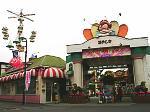 |
| Hanayashiki Amusement Park |
Open 10:00 to 18:00 (longer hours during holidays).
Admission: 900 yen plus separate fees for rides. |
| Originally opened as a flower park, Hanayashiki has a history of more than 150 years. Located just a few steps from Sensoji, the miniature amusement park offers numerous attractions, including a small Ferris wheel, roller coaster, carousel and Space Shot. |
|
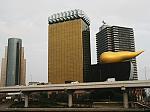 |
| Asahi Beer Tower |
| Restaurants open daily from 11:30 to 22:00. |
| The Asahi Beer Tower and Asahi Super Dry Hall with its characteristic Flamme d'Or were, completed in 1989 and host the headquarters of Asahi Breweries. Furthermore, several restaurants can be found in the complex. |
|
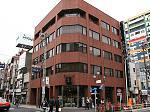 |
| Taikokan (Drum Museum) |
|
| Drums from around the world, including Japanese taiko drums, are exhibited in this small museum. Visitors can play several of the drums. The museum is located in a floor above the Miyamoto Unosuke Nishi Asakusa store, which sells Japanese drums and festival goods. |
|
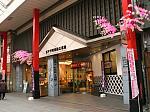 |
| Edo Shitamachi Traditional Crafts Museum |
| Open daily 10:00 to 20:00. Admission free. |
| This small museum introduces the many traditional arts and crafts of the old Tokyo (formerly known as Edo), such as scissors, combs, furniture, silverware, embroidery and more. Demonstrations by craftsmen are held on weekends. |
|
---------------------------------------------------------------------------------------------------------------------------------------------------------------------
-Sensoji Temple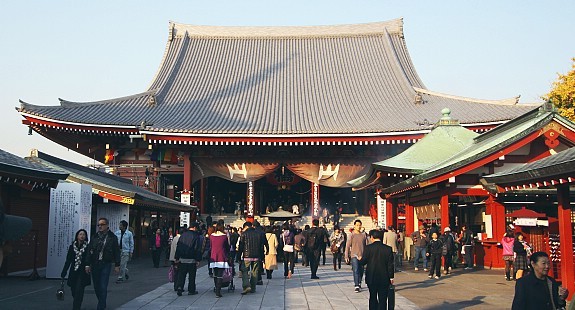
Sensoji (also known as Asakusa Kannon Temple) is a Buddhist temple located in Asakusa, the center of the shitamachi (lit. "low town").
The legend says that in the year 628, two brothers fished a statue of Kannon, the goddess of mercy, out of the Sumida River, and even though they put the statue back into the river, it always returned to them. Consequently, Sensoji was built there for the goddess of Kannon. The temple was completed in 645, making it Tokyo's oldest temple.
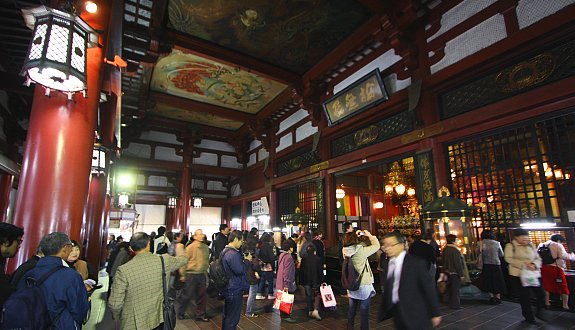
When approaching the temple, visitors first enter through the Kaminarimon (Thunder Gate), the outer gate of the Sensoji and symbol of Asakusa. A shopping street of over 200 meters, called Nakamise, leads from the outer gate to the temple's second gate, the Hozomon. Besides typical Japanese souvenirs such as yukata and folding fans, various traditional local snacks from the Asakusa area are sold along the Nakamise. The shopping street has a history of several centuries.
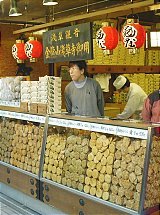 Osenbei (rice crackers) Osenbei (rice crackers) |
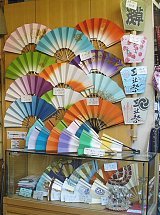 Folding Fans Folding Fans |
 Yukata and T-shirts Yukata and T-shirts |
| from left to right: Kibidango - Skewered kibi-balls covered with soybean powder; top: Agemanju - deep fried manju (soft cake with red bean paste filling); bottom: Ningyoyaki - small cake with red bean paste filling; Kibidango Shop |
Beyond the Hozomon main gate stands the temple's main building and a five storied pagoda. The Asakusa Shrine, built in the year 1649 by Tokugawa Iemitsu can be found close by the temple's main building.
Various events are held throughout the year in the Sensoji Temple area. Some of them are:
- Sanja Matsuri (more details) - May: one of Tokyo's three major festivals.
- Hozuki-ichi (Hozuki Market) - July: Hozuki are ground cherries, a typical summer plant in Japan.
- Asakusa Samba Carnival - August
- Tokyo Jidai Matsuri - November: a festival commemorating the history of Tokyo and the Edo culture.
- Hagoita-ichi (Hagoita Market) - December: Hagoita is the wooden paddle used in Hanetsuki, a traditional
-------------------------------------------------------------------------------------------------------------------------------------------------------------------
Ueno Park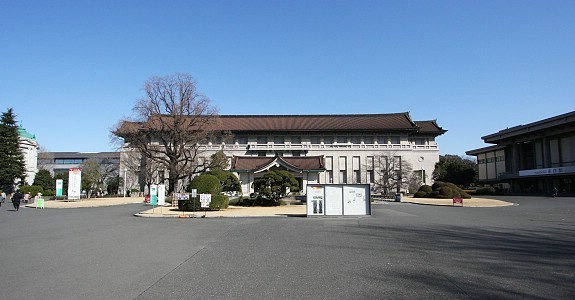
Ueno Park is a large public park just next to Ueno Station in central Tokyo. The park grounds were originally part of Kaneiji Temple, which used to be one of the largest and wealthiest temples in the city and a family temple of the ruling Tokugawa clan during the Edo Period. Kaneiji stood in the northeast of the capital to protect the city from evil, much like Enryakuji Temple in Kyoto.
During the Boshin Civil War, which followed the Meiji Restoration in 1868, Kaneiji suffered nearly complete destruction in a battle between the victorious forces of the new Meiji government and loyalists of the overthrown shogunate. After the battle, the temple grounds were converted into one of Japan's first Western style parks and opened to the public in 1873. A statue of Saigo Takamori, one of the generals in the Battle of Ueno, stands near the park's southern entrance.
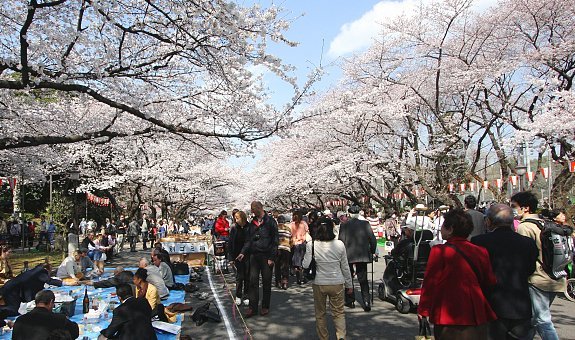 Ueno Park during the cherry blossom season
Ueno Park during the cherry blossom season
At the southwestern end of the park lies Shinobazu Pond, one of many reminders of Kaneiji Temple's former grandeur. The pond represents Lake Biwako (in a reference to Kaneiji's model, the Enryakuji Temple of Kyoto, which overlooks Lake Biwako). On an island in the middle of the pond stands Bentendo, a temple hall dedicated to the goddess of Benten.
Today Ueno Park is famous for the many museums found on its grounds, especially the Tokyo National Museum, the National Museum for Western Art, the Tokyo Metropolitan Art Museum and the National Science Museum. It is also home to Ueno Zoo, Japan's first zoological garden.
Additionally, Ueno Park is one of Tokyo's most popular and lively cherry blossom spots with more than 1000 cherry trees lining its central pathway. The cherry blossoms are usually in bloom during late March and early April and attract large numbers of hanami (cherry blossom viewing) parties.
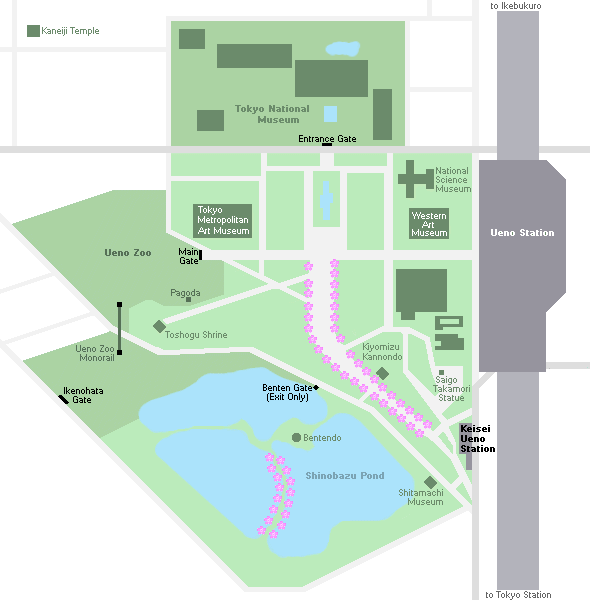
Temples and Shrines:
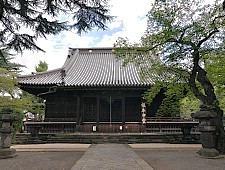 |
Kaneiji Temple |
| |
| During the Edo Period Kaneiji Temple was one of the largest and wealthiest temples in the city. It was destroyed during the Boshin War, and remnants of the original temple complex, such as its five storied pagoda and Toshogu Shrine, are scattered around the park. The current Kaneiji is a relatively unremarkable, small temple located in a quiet neighborhood near the northwest corner of Ueno Park. |
|
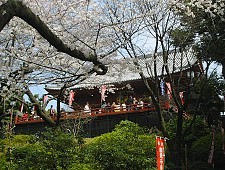 |
Kiyomizu Kannon Temple |
| |
| Kiyomizu Kannondo was originally built in 1631 as part of Kaneiji Temple. Its design, including a wooden balcony extending from the hillside, was inspired by Kiyomizudera in Kyoto. The temple is home to an image of Kosodate Kannon, the goddess of conception, and is particularly popular among women hoping to have children. |
|
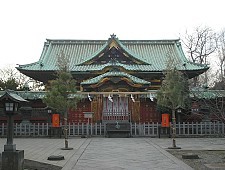 |
Toshogu Shrine |
| Major renovation works are carried out until December 2013 |
| Ueno Toshogu Shrine was built in 1616 and is one of numerous shrines across the country that are dedicated to Tokugawa Ieyasu, the founder of the Edo Shogunate. The Ueno Toshogu Shrine used to be incorporated into Kaneiji Temple until 1868. Major renovation works are currently underway, scheduled to be completed in late 2013. |
|
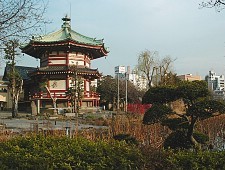 |
Bentendo |
| |
| Bentendo is an octagonal temple hall on an island in Shinobazu Pond at the southern end of the park. The temple is dedicated to Benten, the goddess of good fortune, wealth, music and knowledge. Bentendo's grounds are especially lively during the cherry blossom season when they are crowded with festival food stalls. |
|
 |
Tokyo National Museum |
|
| The oldest and largest museum in Japan, this museum is made up of five buildings, each like a separate museum in itself. They house the largest collection of national treasures and important cultural items in the country. |
|
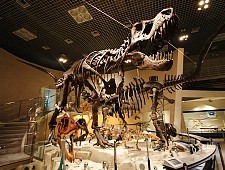 |
National Science Museum |
| |
| This museum covers both science and natural history with hands-on physics and robotics experiments, an impressive collection of mounted animals and a 360 degree virtual theater relocated from the Aichi Expo. |
|
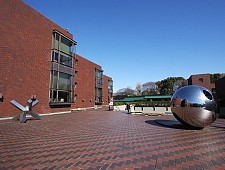 |
Tokyo Metropolitan Art Museum |
| Closed for renovations for two years from April 5, 2010! |
| This museum displays all types of art in its six galleries, some of which are underground. There are no permanent exhibitions but some free exhibitions by various art groups. |
|
 |
National Museum of Western Art |
|
| This museum displays Western art, primarily by European artists. There are rotating exhibitions from the museum's collection as well as temporary special exhibitions. |
|
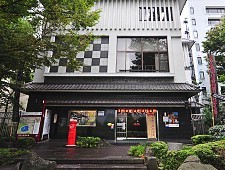 |
Shitamachi Museum |
|
| Shitamachi is the name of the artisan and merchant part of old Tokyo. This nostalgic museum has exhibits and reconstructions that show what life was like in Tokyo from the late Meiji to early Showa Periods. |
|
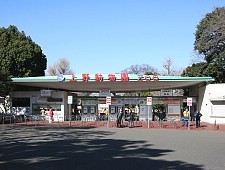 |
Ueno Zoo |
| |
| Opened in 1882, Ueno Zoo is Japan's oldest zoo. Its most popular residents are giant panda bears, which first moved here in 1972 on the occasion of the normalization of relations between Japan and China. After the death of Ling Ling in 2008, the zoo had temporarily no panda bears, but they made a comeback in 2011. |
|







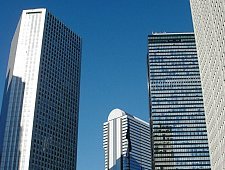







































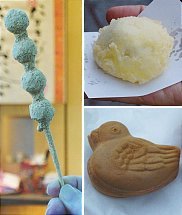
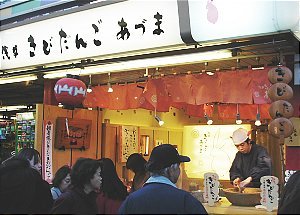














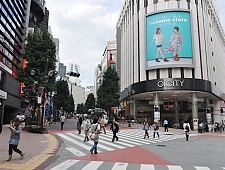
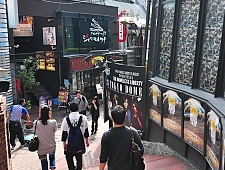
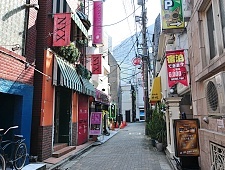
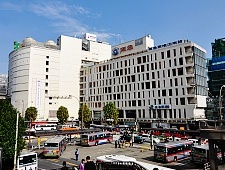
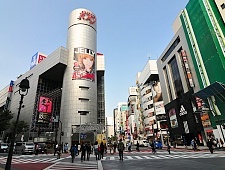
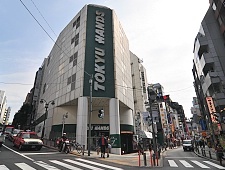
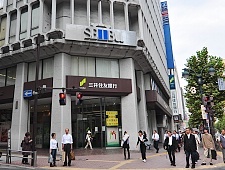
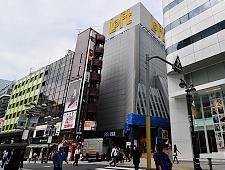
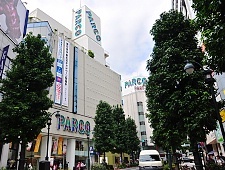
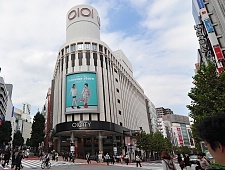
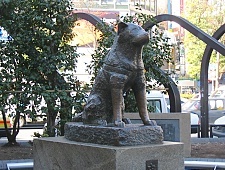
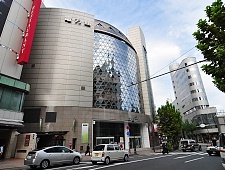
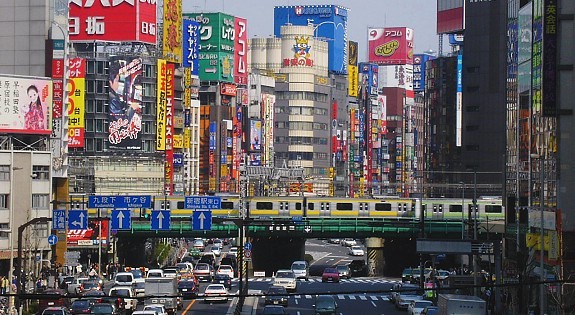
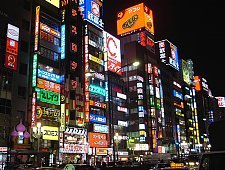
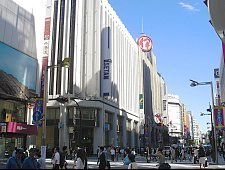
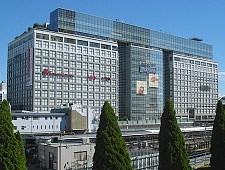
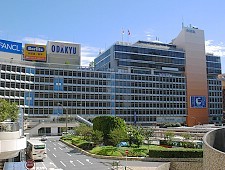
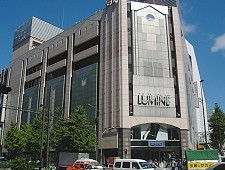
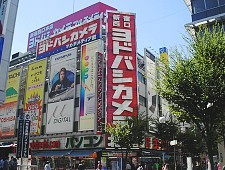
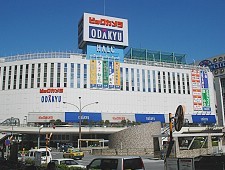
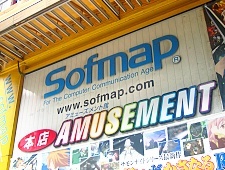
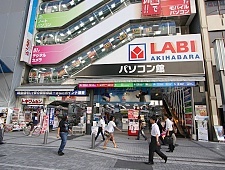
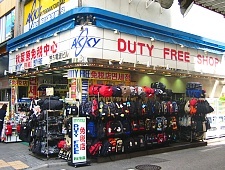
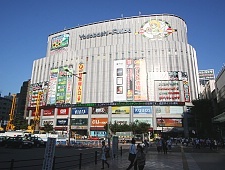
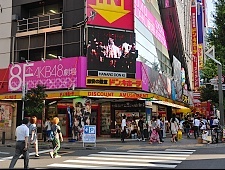
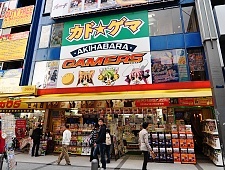
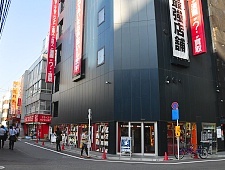

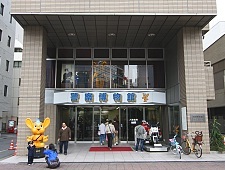
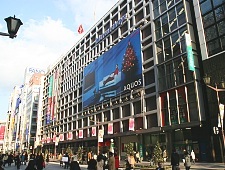
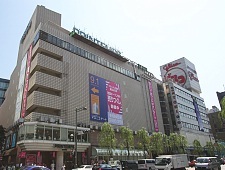
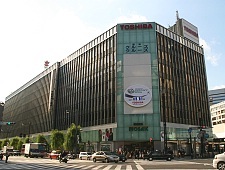




0 opinions